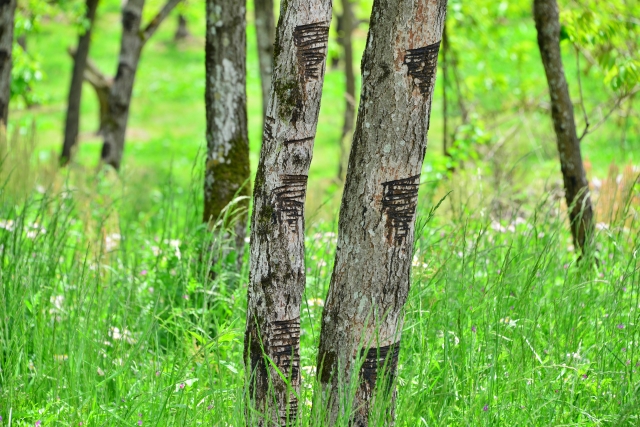News
2024.03.22
Columns
What is “Lacquerware”? Japanese Traditional Craft (First Part)

Lacquerware (“Urushi” in Japanese) is one of Japan’s representative traditional crafts, and refers to products that are coated with lacquer. Due to its beauty and ease of use, it is popular overseas, and over time, many lacquerware products have been exported under the name “japan.”
In this column, we will introduce what lacquer is, the features and types of lacquerware products, processing methods, famous production areas, etc. in the first part and the second part.
Table of Contents (first part)
1. What is Lacquer?
_1-1. What is Lacquer? Method of Collecting
_1-2. What Color is the Lacquer?
2. Characteristics of Lacquer and Lacquerware
_2-1. Advantages of Lacquer
_2-2. Precautions When Using Lacquerware
3. Summary of the First Part
What is Lacquer?
What is Lacquer? Method of Collecting
Lacquer, which is used when making lacquerware. Lacquer is a natural resin paint made from the sap of the sumac tree. The skilled laborers collect each sap by hand between June and November. The method of collecting it is a painstaking process. They make a linear wound on the surface of the tree trunk, gradually lengthening the wound over a period of four to five days, and collect the small amount of sap that oozes from it in an attempt to repair the wound. Only about 200g can be harvested from one tree, and after harvesting, the sumac tree must be cut down. It takes 10 to 15 years to grow one tree. So lacquer is an extremely valuable raw material.
What Color is the Lacquer?
Do you know what color the precious lacquer obtained in this way is? Some people might imagine the bright vermilion or glossy black that is seen in many lacquerwares. In fact, this freshly harvested lacquer has a milky white color. The collected lacquer is then processed to make lacquer suitable for making products by removing tree bark and debris, and processing such as concentration and heating. When the processed lacquer is applied as is, it has a translucent amber color. When pigments containing iron are added to this, a chemical reaction occurs and is resulting in jet black lacquer, and when mercury sulfide is added, vermilion lacquer is created. Even apart from these, depending on the type of pigment added, lacquer can be made in a variety of colors.
Characteristics of Lacquer and Lacquerware
Advantages of Lacquer
Urushiol, the main component of lacquer, becomes quite strong when it oxidizes and hardens. It is resistant to acids and alkaline alcohols, and once solidified, it cannot be dissolved even by hydrochloric acid or sulfuric acid. The more you apply it, the stronger it becomes. Furthermore, it is extremely durable, water resistant, heat insulating, heat retaining, antibacterial, and antiseptic. So, lacquerware made by applying lacquer has the following advantages.
・Durability: Strong and hard to break.
・Water resistant: You don’t have to worry about it leaking even if you pour soup into the lacquerware bowl.
・Insulation: Even if you pour hot soup into it, the bowl won’t get too hot to hold.
・Heat retention: Prevents plated dishes and soups from getting cold.
・Antibacterial: It has the ability to inhibit the growth of bacteria in food.
・Antiseptic: The coated wood and the items placed inside the lacquerware will not rot easily.
As mentioned above, lacquer has very good performance, and no synthetic paint superior to lacquer has yet been developed.
Precautions When Using Lacquerware
On the other hand, even such lacquer has its weaknesses. Please note the following points when you use lacquerware.
・Store out of direct sunlight as it is sensitive to UV rays.
・As it is weak for extreme tempreture changes, do not use the microwave or refrigerator, or put freshly boiled food in it. Also, refrain from using dishwashers and dryers.
・The lacquer is not completely hardened for about a year after being made, so it is easily scratched. To prevent scratches and peeling, avoid using coarse sponges or metal forks.
In addition, even if the wooden lacquerware peels off or gets scratched, it can be repaired. This is another benefit of lacquerware. If you repair it, it will last a long time.
Since it is a precious piece of lacquerware, you should be careful about how you use it and want to continue using it for as long as possible.
Summary of the First Part
In the first part, you learned that lacquer is an excellent natural paint, but the amount that can be harvested is very small, making it a valuable raw material. By processing and coloring through various processes, lacquerware is produced in a variety of colors, from bright to dark jet black, as seen in the finished product.
Lacquer has the advantage of being hard to break, strong against water, heat insulating, heat-retaining, antibacterial, and antiseptic. While it has the advantage of being strong against acids, alkalis, and alcohol, it is weak against UV rays and sudden temperature changes. In addition, lacquerware can be repainted, so even if it becomes damaged or peels off, you can continue using it for a long time by repairing it.
In the second column, we will introduce the types of lacquerware products available, processing methods, and typical production areas.
Imoto Sangyo handles various types of ceramics, kitchenware, and daily necessities.
For more information, please see the “Goods & Cases” page.
(Reference)
Ministry of Agriculture, Forestry and Fisheries
Japan Urushi Ware Federation of Cooperatives
Wagokoro
Category
Archive

